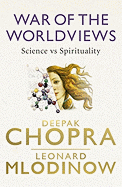HOLY COW! Who let the cows out?

CAUTION: INDIAN cows straying
For a tourist, seeing cows on Indian streets equate to an ‘authentic’ Indian experience. People who have never been to India have a hard time to believe how Indian cows and an assortment of other animals freely roam Indian streets. Even the movie ‘Delhi-6’ has a scene on how traffic got choked because a cow was giving birth. It’s interesting to note that these humble bovines on the roads are not stray cattle. The cows seem to enjoy freedom and liberty in Indian roads without any voting rights.Protest against animal-neglect, animal-protection and anti-cruelty movements have been prevalent in India since ancient times. There are plenty of historical records, edicts, legends and scriptures support an animal friendly co-existence. Even the great Mahatma Gandhi once remarked that “The greatness of a nation and its moral progress can be judged by the way its animals are treated.” This was more a moral basis for vegetarianism than to allow cattle to stray or even limp on clogged city roads. Most cattle have owners and are not totally stray.
Elsewhere in the world animals on roads are not uncommon. We see a lot of ‘road-kills’ – run over by passing traffic everywhere; be it cats, possums, rodents or even deer, moose, wildlife etc. In North American roads coming across the sign “CAUTION: Animals Crossing” is not rare. These are unlikely in city limits though.
Modern India with 30 % of the world’s cattle; 26 distinctive cow breeds considers cows as sacred but sadly neglected. Though there are cow protection movements, anti-cow slaughter legislations, cow-care programmes, Gaushalas for sick & old cows, a new cow-urine cola being developed the autobiography of the Indian cow is painfully sad. Even politicians join the bandwagon to protect the cow only to gain some mileage out of that. Wonder what would happen if cows could vote?
JAI HO: Mother Cow
For Indians, the cow represents the hallowed principle of motherhood. The Hindus consider cow as ‘Gomatha’. She symbolizes charity and bounteousness because of her milk, which is essential for the nourishment of the young. To India’s millions of Hindus, the cow is a holy animal that cannot be harmed. In India anything to do with prosperity, wealth or sacrifice has ‘motherhood’ tagged to it e.g. Bharat mata, Vande mataram, Lakshmi mata, Ganga mayya. The cow acts as the surrogate mother providing milk for the rest of the human life-through childhood, adult age and old age. Hence one would be filled with repugnance at the ungrateful idea of killing mother, whether surrogate mother or otherwise.
But there seems to be a myopic view of this term ‘motherhood’. If Goddess of wealth – Lakshmi is revered as “mother” – then why should she be squandered at the throw of a dice at the casinos? Why the mighty Ganga considered sacred and the “sanctifying mother” allowed to be polluted left, right and centre? What to speak of the speechless cow-mothers of India?
The cow is also believed to be a symbol of the earth – because it gives so much yet asks nothing in return. Kamadhenu, the wish-fulfilling sacred cow, is a part and parcel of Hindu Puranas. There are even special ‘thanks-giving’ festivals dedicated to the docile cow. The third day of the Pongal festival in South India is devoted to cows, cattle and bulls. It’s called ‘maattu pongal’ where they are bathed in water, horns shaved and painted, neck bells tied; forehead with sandal, kumkum and then venerated for being a great boon to mankind.
Heritage-speak on cows
According to Vedic heritage, cows were considered revered. They constituted material and spiritual assets of the ancient India. From ancient times cows in India form the core of religious sacrifices, for without ghee produced from cow’s milk, no sacrifice can be performed.
‘Rigveda’ refers to cow as ‘Aghnya’- or one which must never be killed. ‘Yajurveda’ states- ‘Go matra Na Vidyate’ – which means that there is no parallel to the cow in this world. .’Atharva Veda’ considers cow as the ‘house of prosperity’- ‘Dhenu Sadanam rayinam’.
In the Mahabharata, the wise Grandsire Bheeshma saying:
“Cows represent sacrifice. Without them, there can be no sacrifice…Cows are guileless in their behavior and from them flow sacrifices…and milk and curds and butter. Hence cows are sacred…”
He also observes that the cow acts as a surrogate mother by providing milk to human beings for the whole life. So the cow is truly the mother of the world.
During medieval periods, cow population was protected even by the invading Muslim rulers right from Humayun to Shahjahan and ShahAlam there was complete ban on the slaughter of cow.
Modern response…
Though cows are considered sacred, the practices don’t seem to match the mandate of animal welfare as the constitution of India provides ‘Animal Protection’ by Article 51 Ensuring “Compassion to all Living Creatures”). These days, city councils like the Municipal Corporation of Delhi have now hired ‘cowboy/cow-catchers’ to catch and ship them outside the city limits. Also, according to a local report in New Delhi the straying cattle are set to get RFID (Radio frequency identification Tracking) tags. But, what about the owners of these cows, who let them out in the place. Could the authorities do something similar to them too? The Humble Indian cow will certainly say ‘Moooo’ to this.
Surely the ‘Animal Welfare Board of India’ – the AWBI, the first of its kind Animal welfare organization, established in 1962 by any Government in the world have a response to the sad plight of cows that amuses the tourists. A quote embedded in the AWBI website by Lord Mahavir – the Jain Thirthankar (c. 599-527 BCE) may sum up the government’s intent on animal welfare:
“All beings are fond of life, hate pain, like pleasure, shun destruction, like life, long to live. To all life is dear.”






